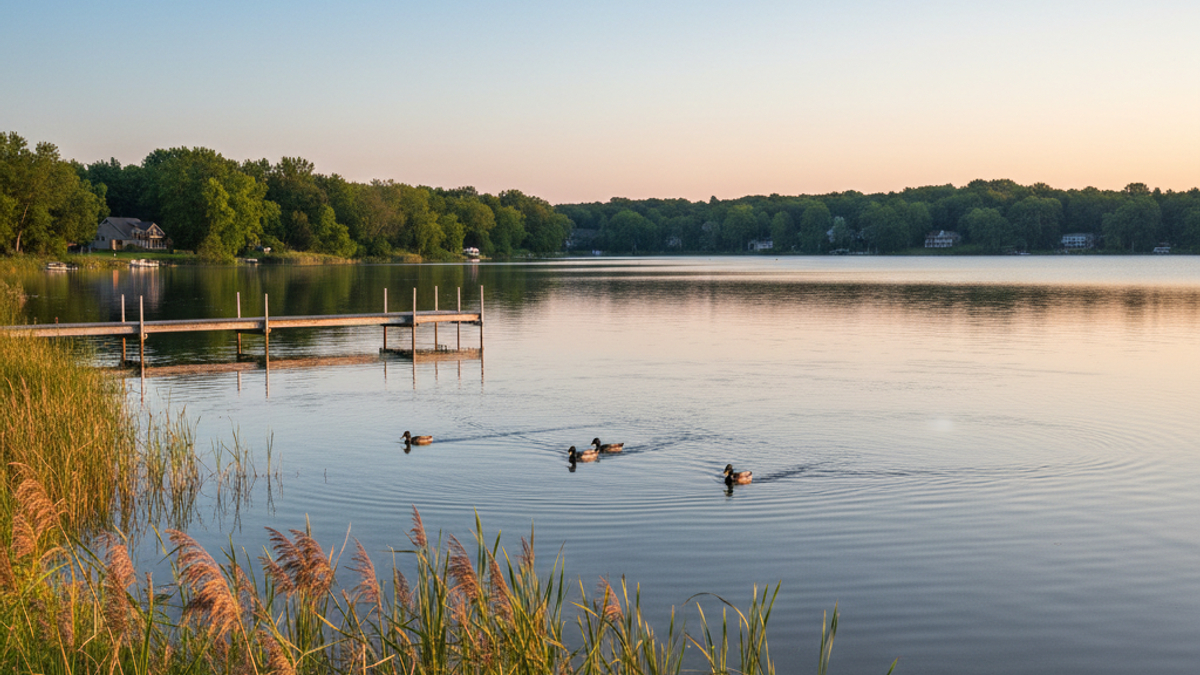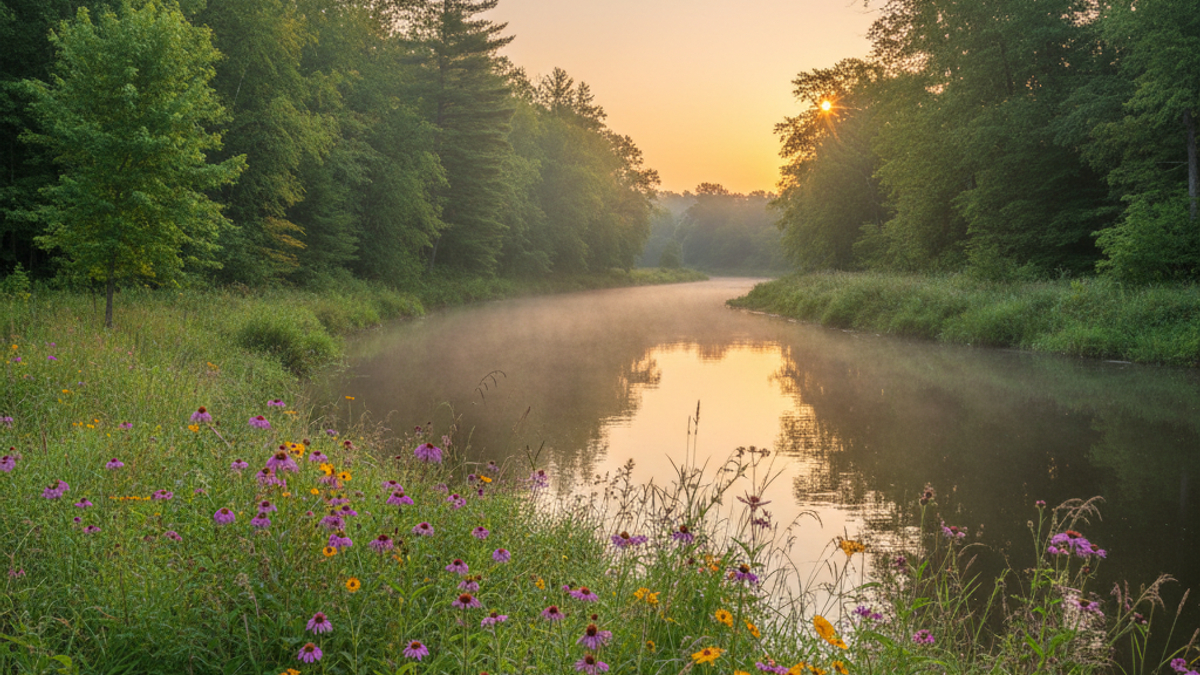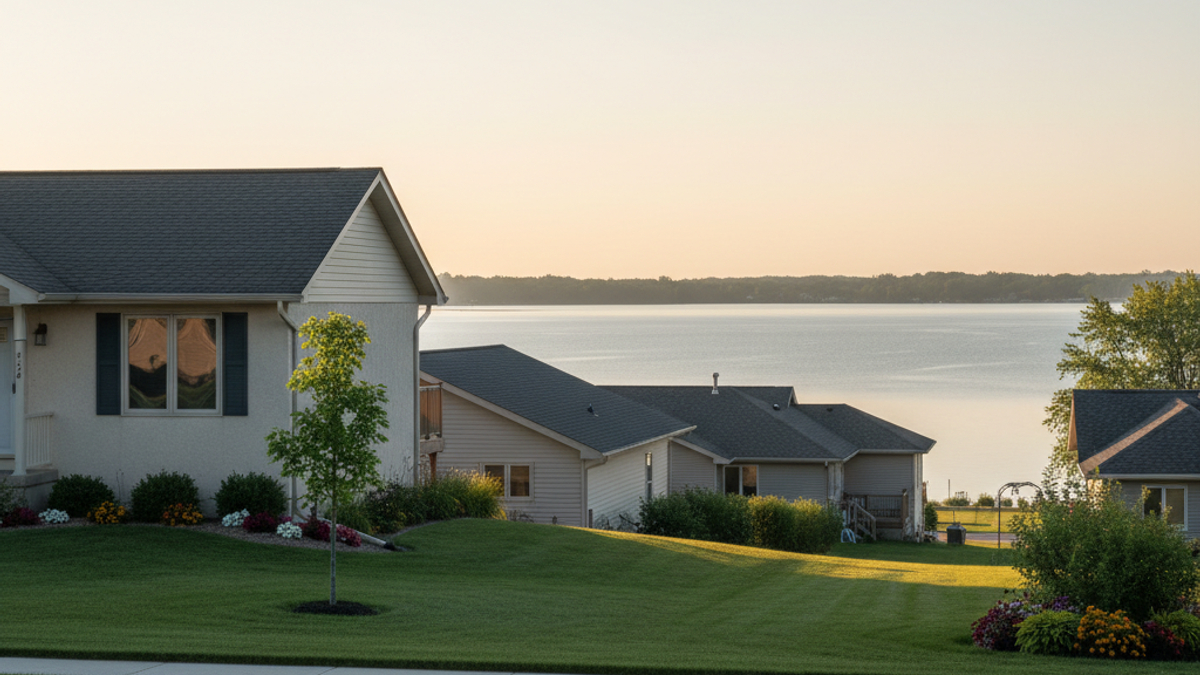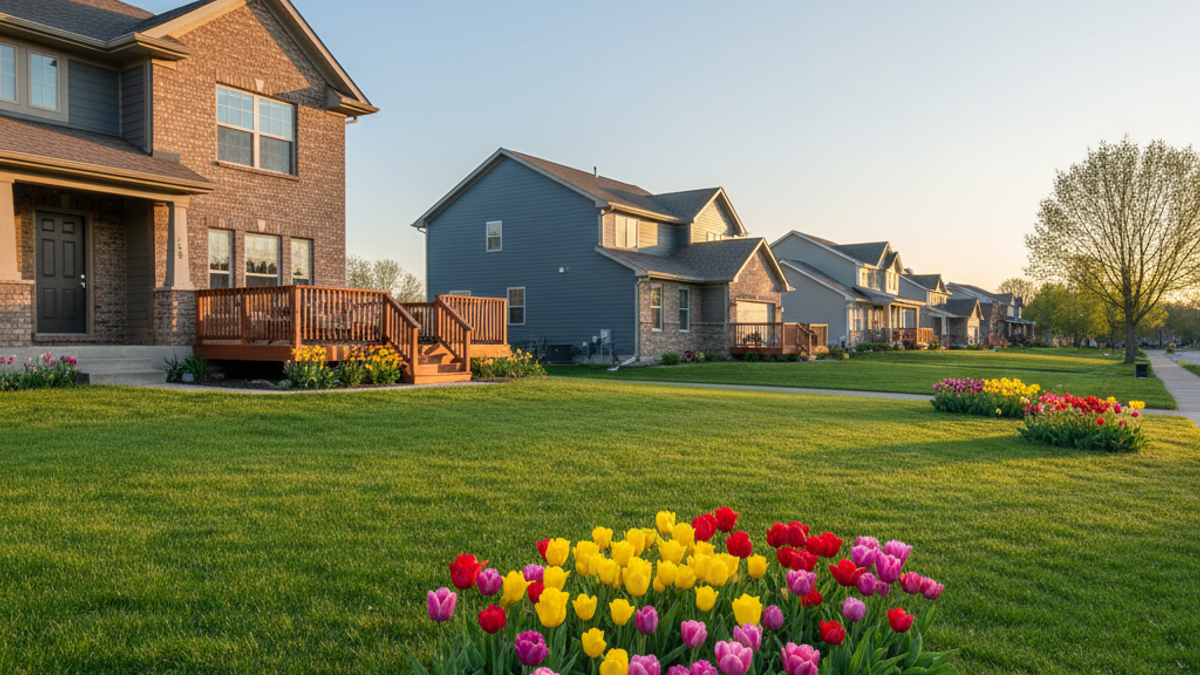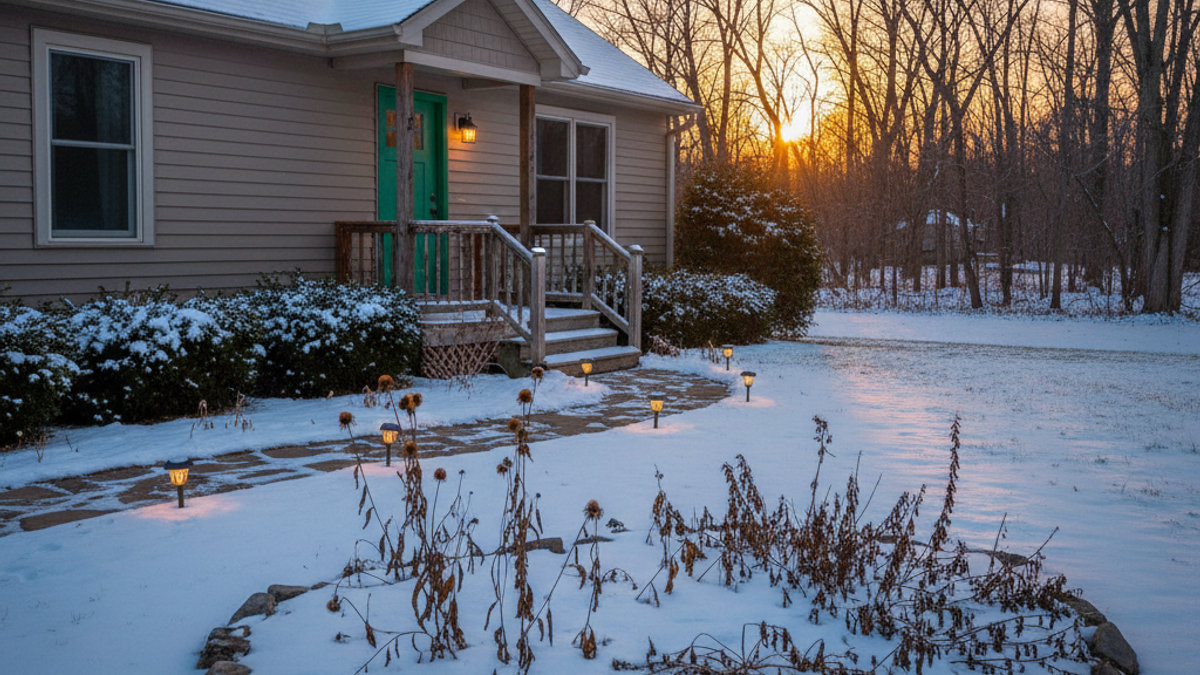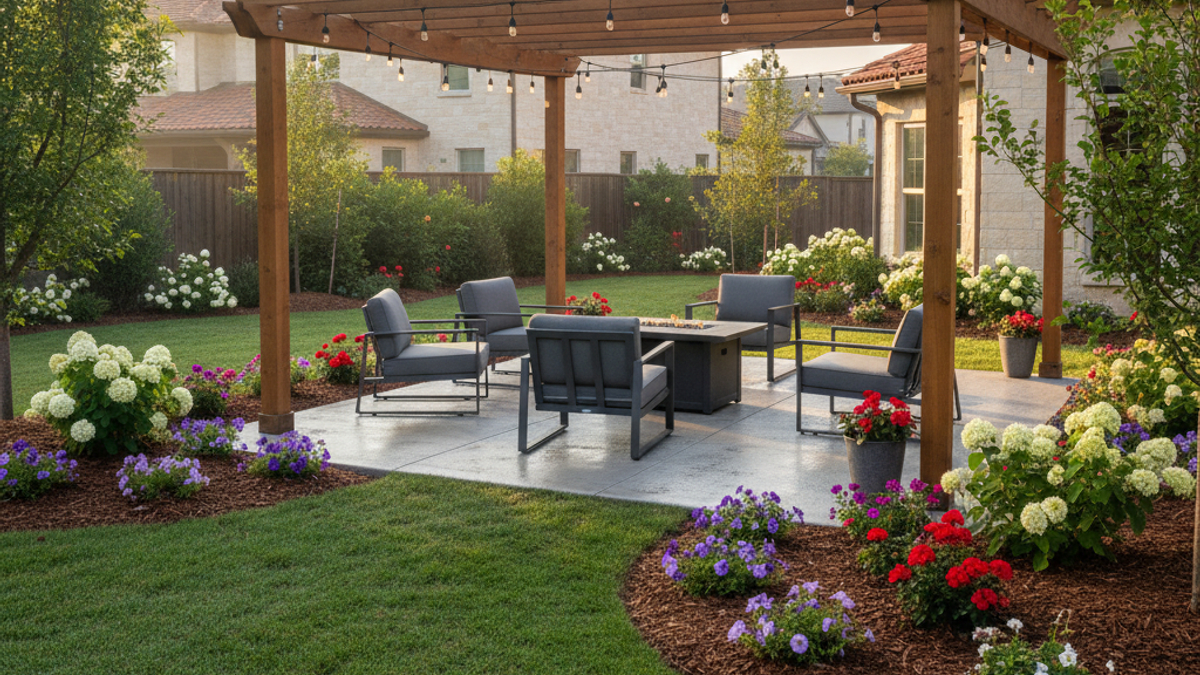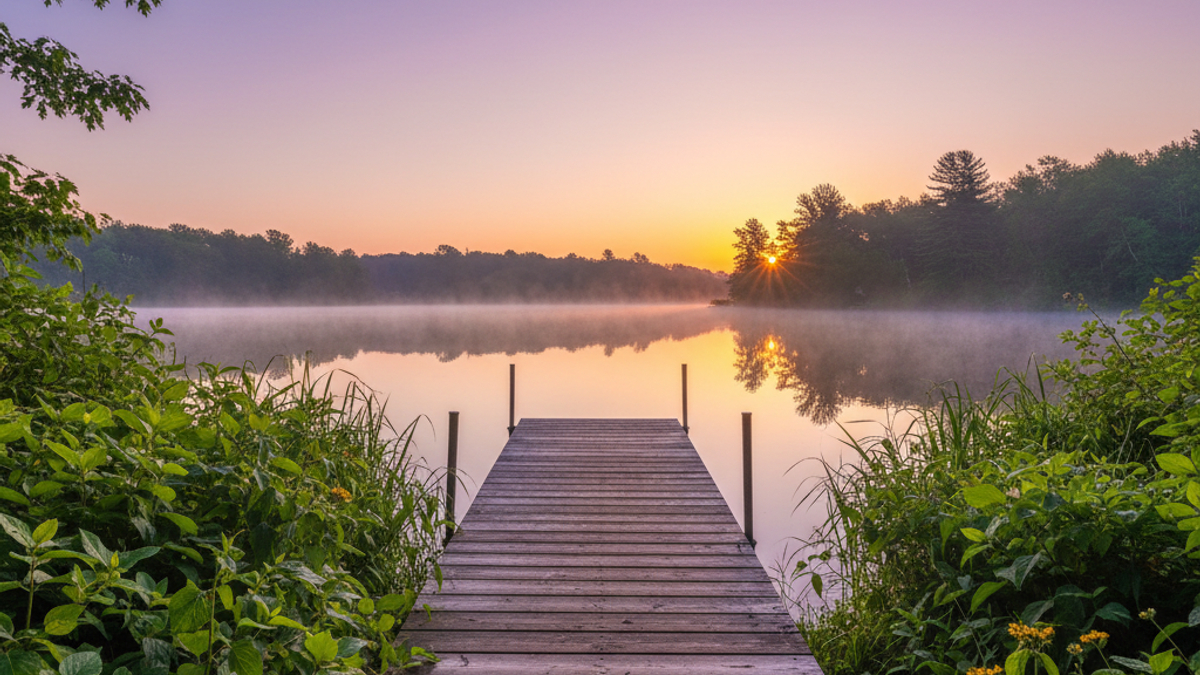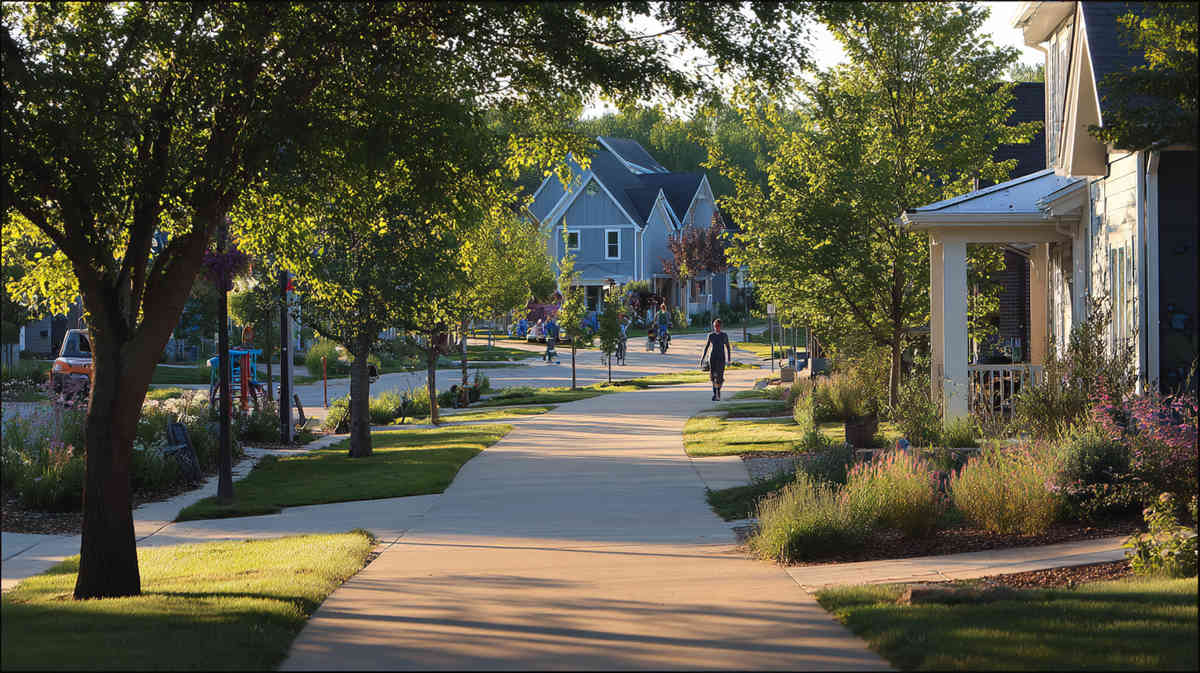A Quick Snapshot of McFarland
McFarland sits along the eastern shore of Lake Waubesa, just eight easy miles from the Wisconsin Capitol building in Madison. The village began as a rail stop in the 1850s, yet it now feels more like a tech-commuter hub wrapped in a lakeside resort vibe. Current population hovers near 10,200 and local planners project a modest uptick of roughly one percent each year through 2027. That gentle growth is nudging the housing market. Median single-family sales finished 2024 at about 440 000 dollars, up nine percent year over year. New construction lists closer to 520 000. Inventory is tight, days on market are shorter than a Midwest autumn, and yes, buyers are still arriving while very few long-time residents leave.
The Upside Everyone Talks About
You want straight talk, so here it is. McFarland serves up more advantages than a Friday fish fry. Let’s break them out.
• Community vibe that remembers your name. Neighbors wave on North Peninsula Way, volunteers refill the Little Free Pantries, and the annual Thistle and Thistle Run pulls half the zip code onto the same starting line. You rarely feel anonymous. If you prefer a just-close-my-garage kind of life, this may catch you off guard, though most newcomers grow to like it.
• Water, woods, and wide skies. Lake Waubesa waits on the west edge with four public boat launches, evening paddles, and early-morning walleye. Lower Yahara River Trail slips south toward Stoughton, offering seven miles of boardwalk above the water. Capital City State Trail clips the north border, perfect for cycling binges. Winter still rules Wisconsin, yet local crews groom cross-country tracks the moment snow lands, so cabin fever rarely wins.
• Close enough to Madison without living on top of the traffic. Eight miles translates to twelve or fifteen minutes if you time the stoplights on US-51. That short hop means easy access to Big-Ten sports, concert halls, and a job market anchored by the university and a growing biotech scene. Many residents treat McFarland as home base while they chase careers in the city.
• Public schools with momentum. The district rolled out a hands-on STEM lab at the intermediate campus last fall, put fresh turf on the football field, and keeps average class size in the low twenties. State report cards list the district as Exceeds Expectations, the tier just below the peak. Booster clubs are active and donors keep chromebooks current. Translation: kids graduate with options and parents spend fewer evenings lobbying for basic resources.
• Everyday convenience. A modern grocery store near Highway AB, at least six coffee shops counting the drive-through kiosk, plus clinics, hardware, and farm-to-table diners, all within a three-mile loop. You reserve the Madison run for big box chains or Saturday farmers market strolls.
• Recreation that costs almost nothing. McFarland Parks and Recreation sells a season boat-launch pass for forty-five bucks, youth soccer for ninety, adult sand volleyball for under sixty. Compare that with private-club fees in larger metros and you will appreciate the bargain.
• Room to breathe. Side streets keep their mature trees, crowded strip malls have not invaded, and the night sky still shows stars. A quick five-minute drive south or east turns into open farmland where you can think in peace.
Yes, every village in Dane County claims some mix of friendliness, scenery, and quick access to Madison. McFarland actually delivers. Commuter traffic is lighter than the west-side beltline, you can kayak at sunrise and log in to a Capitol Square office by eight, and you will likely bump into your realtor in line for a brat at the yearly village festival. That closeness is a feature, not a bug.
The Flip Side You Should Not Ignore
No place is fairytale perfect. Buyers who only chase glossy flyers end up surprised, so let’s pull back the curtain.
• Rising price tag. That nine-percent bump from 2023 to 2024 is not an outlier. Village officials approved just eighty-two new housing permits last year, most aimed at mid-range or executive-level budgets. Starter stock built in the seventies sells fast, often with multiple offers that push final numbers ten or fifteen percent above list. If you are budget-sensitive and hoping for elbow room, brace yourself. The math can hurt.
• Property taxes that sting. Dane County sets higher mill rates than many surrounding counties to fund schools and local infrastructure. A four-hundred-fifty-thousand dollar home with average assessment lands near nine-thousand in annual taxes. Residents grumble every December yet still vote yes on referendums, so the trajectory rarely bends downward.
• Public transit gaps. Madison Metro buses reach McFarland only during weekday rush windows. Nights, weekends, or late-shift commutes will rely on a car or a rideshare, and those rideshares thin out after midnight. Expect to own a vehicle and expect to drive it often. Bike commuters manage the Capitol City Trail from April through October, though winter maintenance shifts can be inconsistent.
• Limited nightlife. McFarland holds two tavern-style grills, a taproom with live music on Fridays, and a bowling alley that doubles as the local pizza spot. When cravings hit for a rooftop bar or late-night sushi you will point your car toward Madison. That ten-minute dash is handy, yet Uber surge pricing after a Badger victory can feel steep.
• Fewer specialty retailers. You will not find a boutique vinyl shop, gourmet cheese cave, or micro-roastery inside village limits. Everyday essentials, yes. Niche cravings, not so much. Online ordering or a quick cross-town drive solves the issue, but impulse browsing is limited.
• Freeze-thaw reality. Lake effect moisture moves straight over Waubesa, drops heavy wet snow, then transforms it into slush when the sun nods out. Stormwater drains clog, neighborhood runners navigate ankle-deep puddles, and roofs sometimes collect ice dams. Home inspectors point to attic insulation and gutter heat cables for a reason.
• Growth pains at intersections. US-51 already carries fifteen-thousand vehicles daily. Add in planned residential pockets off Siggelkow Road and you might sit longer at peak left-turn lanes than local marketing brochures admit. Some projects to widen shoulders are funded, others wait on state approval. Short term, expect backups.
• Small-town politics. Village board meetings can stretch late because everyone knows everyone, and zoning debates feel personal. A proposal for a multi-story apartment near the lake sparked six months of yard signs and heated Facebook threads. Consensus eventually arrives, though patience is required.
None of these drawbacks is a deal-breaker, at least not for most prospects, but ignoring them invites regret. Price pressures, taxes, and daily driving add up quickly. Survey your budget, your schedule, and your tolerance for neighborly gossip before you sign on the dotted line.
Looking Back So You Can Look Forward
McFarland mixes starry skies, school pride, and lake water calm with fast-rising home values and patchy bus schedules. If you crave community hugs, ready-to-launch kayaks, and quick access to a Madison paycheck, the village will feel like a win. If you need subway-level transit, bargain-basement housing, or nightlife past last call, you may hesitate. Weigh the total package and decide if the plus column wins your heart and your wallet. When you visit, listen to the loons on Waubesa at dawn. They tend to make the decision clearer.
Frequently Asked Questions
1. How hot is the McFarland real estate market right now?
Inventory averaged twenty-seven active listings in spring 2025, down almost thirty percent from two years earlier. Bidding wars still flare on homes priced under five hundred thousand.
2. Does McFarland offer open enrollment options in surrounding districts?
Yes, Wisconsin’s statewide open enrollment policy applies, though seat availability depends on grade level and neighboring capacity. Early applications help.
3. What is the typical commute time to downtown Madison?
Ten to fifteen minutes during normal flow, twenty-five if a snow squall slows inbound lanes on US-51.
4. Are there plenty of outdoor spaces apart from Lake Waubesa?
Absolutely. McDaniel Park, Lewis Park soccer pitches, and the Lower Yahara boardwalk all sit within village lines. Babcock County Park launches larger boats four minutes north.
5. How does cost of living compare with Sun Prairie or Verona?
Housing in McFarland sits slightly lower than Verona’s newer subdivisions but higher than older Sun Prairie stock. Groceries, utilities, and health care align closely countywide.
6. Is fiber-optic internet available?
Yes. Multiple providers rolled out gig-speed service along main corridors in 2023, and expansion into outer subdivisions continues.
7. What new development projects are on the horizon?
A mixed-use center near Farwell Street with ground-floor retail and lofts has zoning approval. Completion is projected for late 2026 and includes a public plaza for summer concerts.
Now you hold the real story, both bright and blunt. Ready to walk those tree-lined streets and see if McFarland fits? Take that drive, talk to locals, and bring a notepad. Your future zip code might be waiting on the other side of Waubesa’s shoreline.

